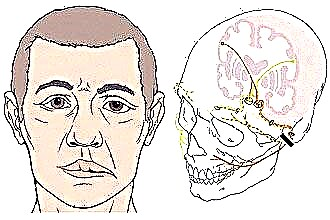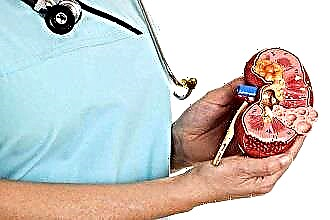Ear congestion is a pathological condition characterized by a decrease in the threshold of auditory sensitivity and autophony. The onset of the symptom is most often associated with dysfunction of the Eustachian (auditory) tube, which normally provides ventilation to the tympanic cavity. A blockage in the ear canal causes a sharp decrease in pressure in the middle ear cavity, which leads to deformation of the ear membrane.
 Catarrhal processes in the mucous epithelium are often caused by the development of pathogenic flora in the upper respiratory tract. With ARVI, tonsillitis, sinusitis and other diseases, pathogens penetrate into the Eustachian tube, which leads to its inflammation and, accordingly, the occurrence of edema. A blockage in the ear canal creates a vacuum (negative pressure) in the ear cavity, resulting in congestion.
Catarrhal processes in the mucous epithelium are often caused by the development of pathogenic flora in the upper respiratory tract. With ARVI, tonsillitis, sinusitis and other diseases, pathogens penetrate into the Eustachian tube, which leads to its inflammation and, accordingly, the occurrence of edema. A blockage in the ear canal creates a vacuum (negative pressure) in the ear cavity, resulting in congestion.
Causes of congestion
What to do if the ear is blocked and cannot hear? Methods for eliminating a pathological condition are determined by the cause of the problem. Inflammatory processes in the mucous membranes of the upper respiratory tract arise as a result of the influence of such factors:
- reduced reactivity of the body;
- colds;
- chronic rhinitis;
- vascular diseases;
- non-compliance with hygiene rules;
- trauma to the outer ear;
- water entering the ear canal;
- impaired blood circulation.
Very often, a provocateur of ear congestion is an ear plug, which completely or partially blocks the auditory canal. As a result, an obstacle arises in the path of sound signals, which contributes to hearing impairment. To eliminate the cork, experts recommend using cerumenolytics: A-Cerumen, Vaxol, Klin-Irs. They soften the wax, causing it to drain out of the ear canal and unblock the ear canal.
Possible diseases
Congestion is a symptom that can be a consequence of the development of serious diseases. Therefore, if discomfort arises, you should not postpone a visit to the otolaryngologist indefinitely. The most common diseases characterized by a decrease in the threshold of hearing sensitivity include:
- tubotympanitis;
- myringitis;
- labyrinthitis;
 adhesive otitis media;
adhesive otitis media;- serous otitis media;
- facial paresis;
- arterial hypertension.
Experts warn that the rapid spread of catarrhal processes in the auditory analyzer can cause serious complications. In particular, otitis media and labyrinthitis are fraught with inflammation of the membranes of the brain, disturbances in the functioning of the vestibular apparatus and the development of sensorineural hearing loss.
It should be noted that sensorineural hearing loss is treatable only at the stage of acute inflammation, which lasts no more than 25-30 days.
Features of pharmacotherapy
Ear congestion is often caused by inflammation of the mucous membranes in the Eustachian tube and tympanic cavity, which appear in the case of otitis externa and otitis media. To eliminate the symptoms, it is necessary to eliminate the main cause of their occurrence - ENT disease. How to treat ear congestion?
In the event of acute inflammation in the auditory analyzer, the following pharmacotherapy agents are used:
- antihistamines (Claritin, Loratadin) - contribute to the regression of inflammatory processes, thereby eliminating swelling in the mucous membrane of the auditory canal;
- mucolytics ("Fluimucil", "Sinupret") - reduce the viscosity of mucus in the eardrum, which speeds up the process of its evacuation through the Eustachian tube;
- vasoconstrictor drops ("Naphazalin", "Phenylephrine") - help to reduce the permeability of the vessel walls, thereby eliminating the swelling of the mucous epithelium in the nasopharynx, tympanic cavity and Eustachian tube;
- ear drops ("Otipax", "Sofradex") - interfere with the synthesis of inflammatory mediators, which accelerates the regeneration process of the affected tissues;
- antibiotics ("Flemoklav", "Augmentin") - destroy most of the aerobic and anaerobic bacteria that provoke the development of ear pathologies;
 antifungal agents ("Candibiotic", "Nystatin") - destroy the cellular structures of mold and yeast-like fungi that provoke the development of fungal otitis externa (otomycosis);
antifungal agents ("Candibiotic", "Nystatin") - destroy the cellular structures of mold and yeast-like fungi that provoke the development of fungal otitis externa (otomycosis);- immunostimulants (Cycloferon, Geviran) - increase the body's resistance, which helps to strengthen local immunity;
- analgesics ("Tylenol", "Daleron") - prevent the transmission of electrical impulses from pain receptors to the corresponding areas of the cerebral cortex, which helps to relieve pain;
- anticoagulants ("Zigris", "Seprotin") - reduce blood clotting, which prevents the formation of blood clots in the foci of inflammation.
It is undesirable to use the above drugs without the recommendation of a specialist in the presence of renal failure, increased vascular permeability and peptic ulcer disease.
Physiotherapy treatment
Physiotherapy is one of the key components of the conservative treatment of ear diseases. Therapeutic procedures help to increase general immunity, which prevents recurrence of inflammation in the auditory analyzer. How is ear congestion treated?
Most of the methods of physiotherapy can be used only at the stage of regression of acute inflammation.
To speed up the healing process and relieve congestion, the following physiotherapy methods can be used:
- electrotherapy - the use of direct and alternating currents in order to improve blood circulation in the inflamed mucous membranes; improves the trophism of tissues, due to which their epithelization is accelerated;
- phototherapy - a physiotherapy procedure in which the affected tissues are exposed to light radiation from fluorescent and diode lamps; promotes the heating of tissues, due to which the process of synthesis of neutrophils is accelerated, eliminating pathogens in the foci of inflammation;
- magnetotherapy - the effect on the body of low-frequency impulse fields, which promotes the resorption of infiltrates in the mucous epithelium.
Equalizing pressure in the ears
 What to do if your ear is blocked? To eliminate congestion, it is necessary to level the pressure difference in the middle and outer ear. To normalize the ventilation of the tympanic cavity, it is necessary to ensure the supply of air to it, which is possible only after unblocking the ear canal.
What to do if your ear is blocked? To eliminate congestion, it is necessary to level the pressure difference in the middle and outer ear. To normalize the ventilation of the tympanic cavity, it is necessary to ensure the supply of air to it, which is possible only after unblocking the ear canal.
Experts recommend using blowing to open the mouth of the Eustachian tube. Some of the most effective blowing methods include:
- Valsalva method: exhalation through the nose with the wings of the nose pressed against the cartilaginous septum;
- Toynbrie method: swallowing movements with a closed mouth and pinched nostrils;
- Bassett's method: tilting the head to the side, with the ear laid down, while exhaling through the closed nose;
- Edmonds method: exhaling air through a closed nose while simultaneously extending the lower jaw forward.
Upon successful completion of the above exercises, a click should occur in the ear, signaling the restoration of the normal position of the eardrum. A whistling sound in the external auditory canal is a sign of the presence of perforated holes in the ear membrane. If you find a problem, you should seek help from an ENT doctor.

 adhesive otitis media;
adhesive otitis media; antifungal agents ("Candibiotic", "Nystatin") - destroy the cellular structures of mold and yeast-like fungi that provoke the development of fungal otitis externa (otomycosis);
antifungal agents ("Candibiotic", "Nystatin") - destroy the cellular structures of mold and yeast-like fungi that provoke the development of fungal otitis externa (otomycosis);

